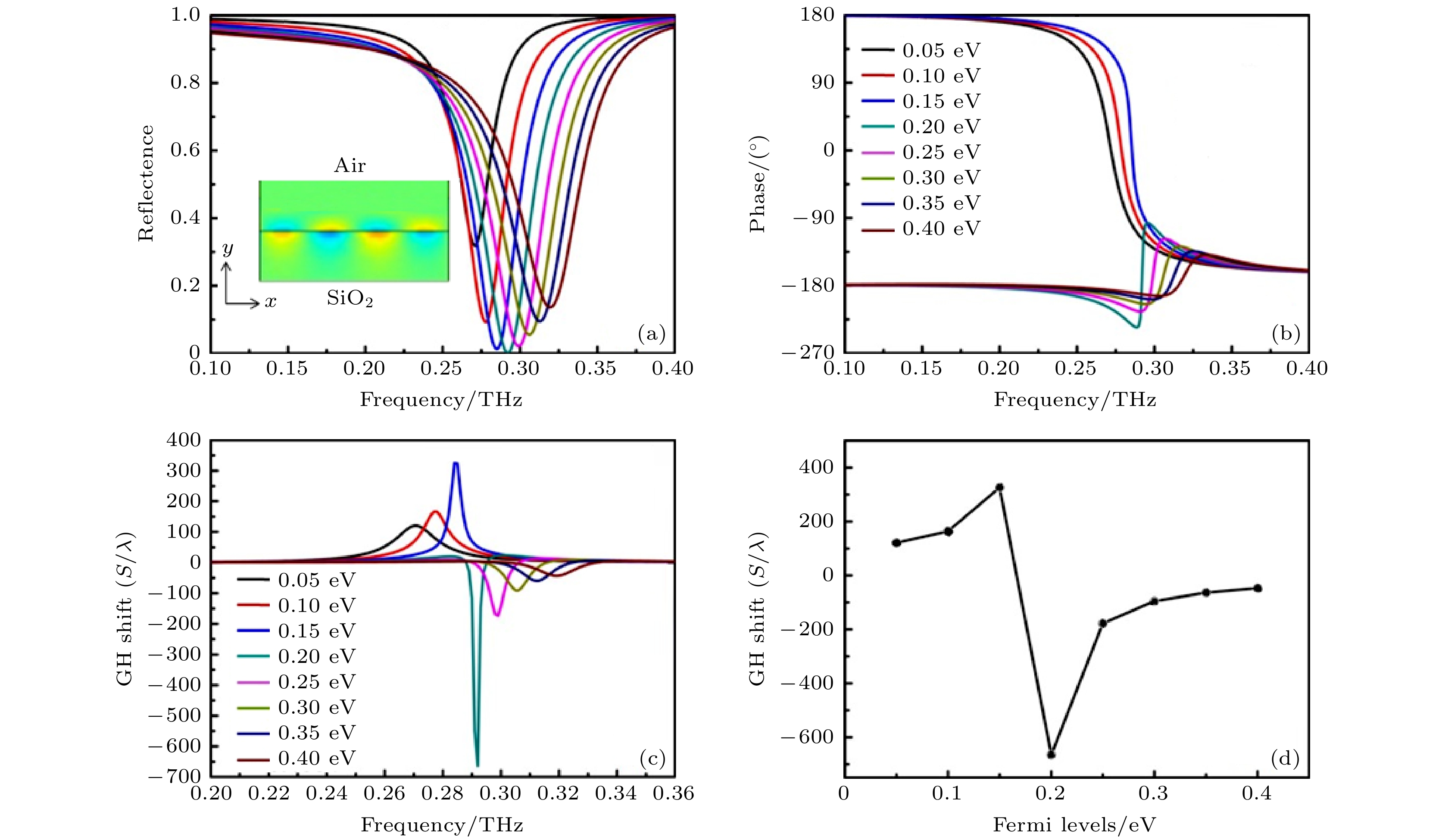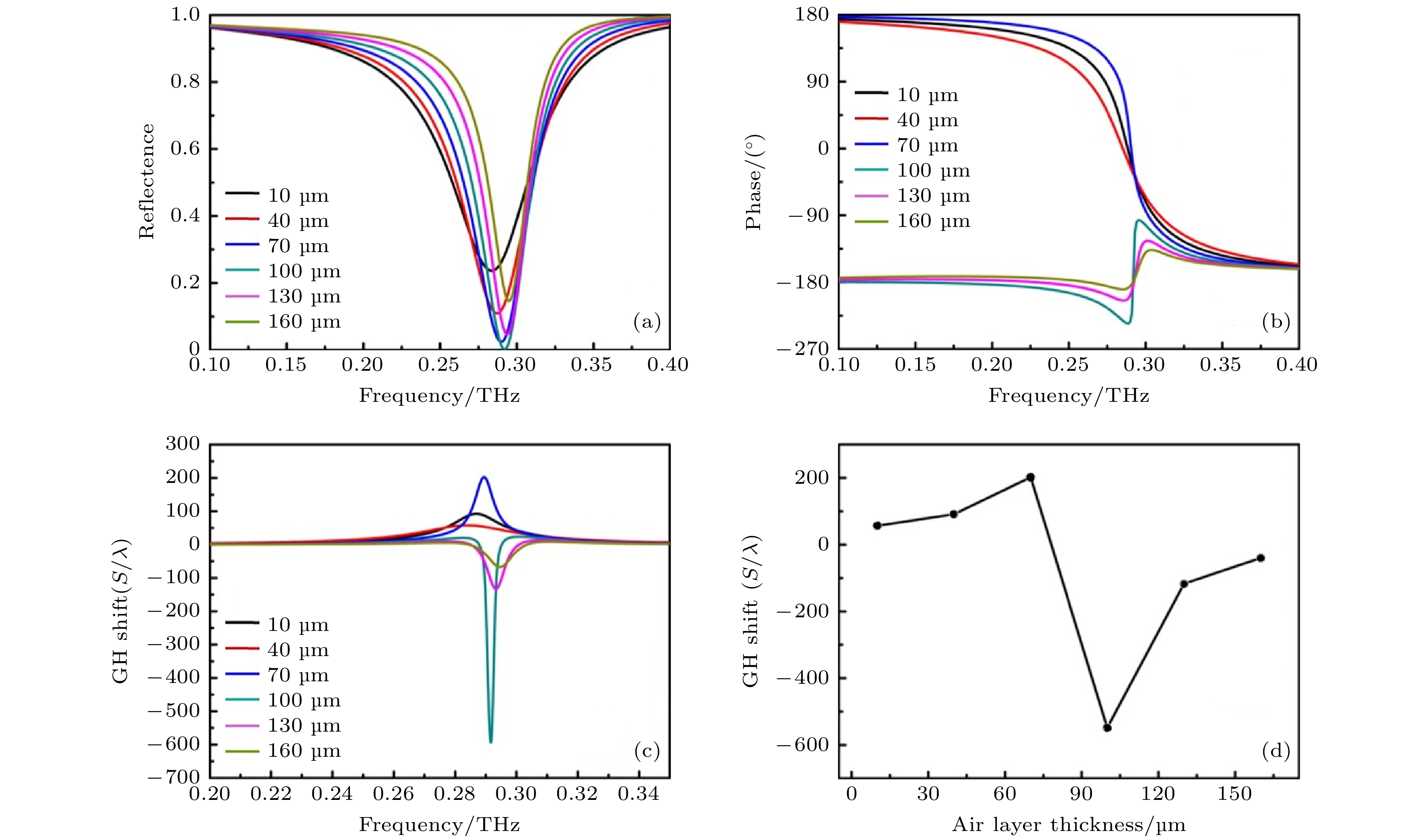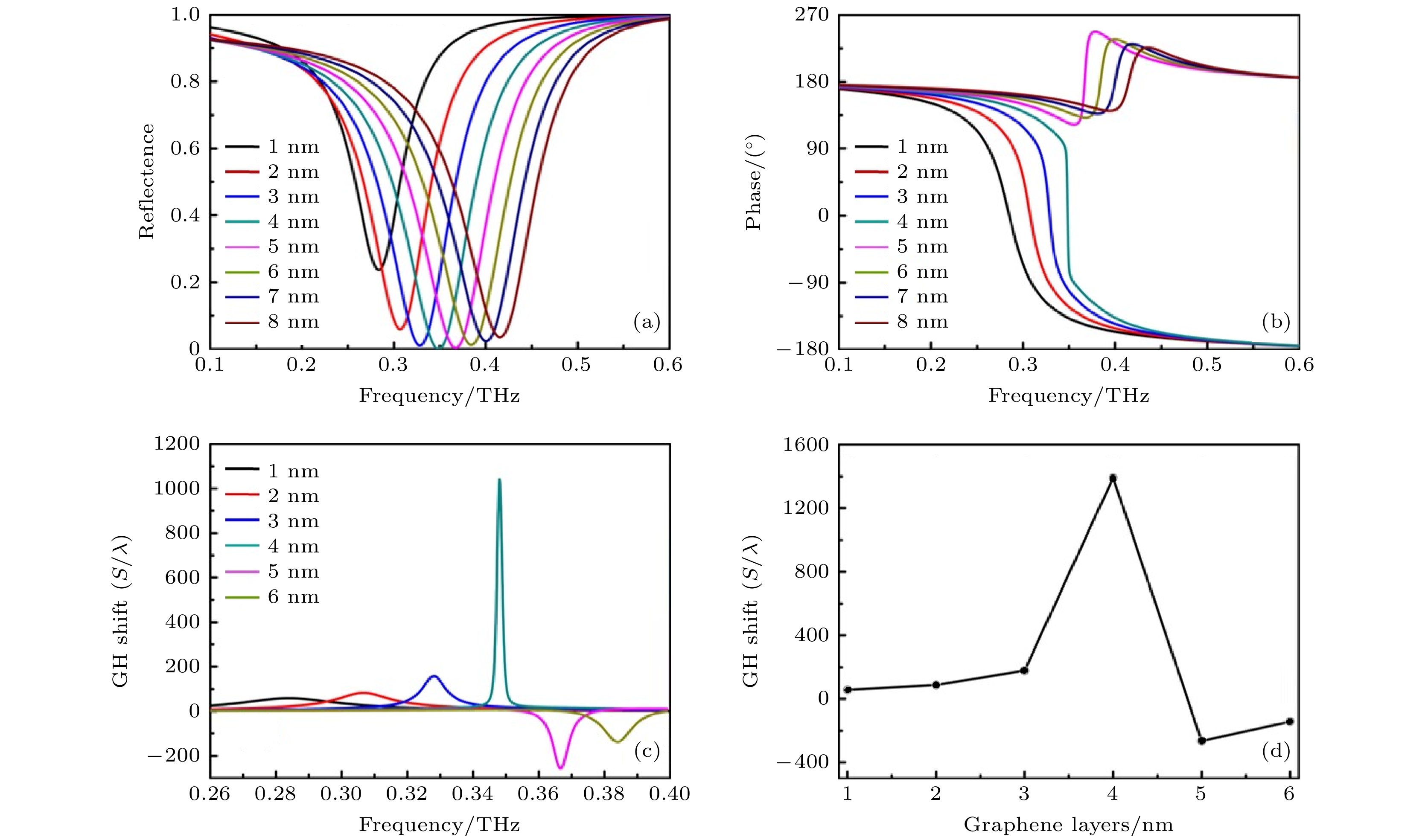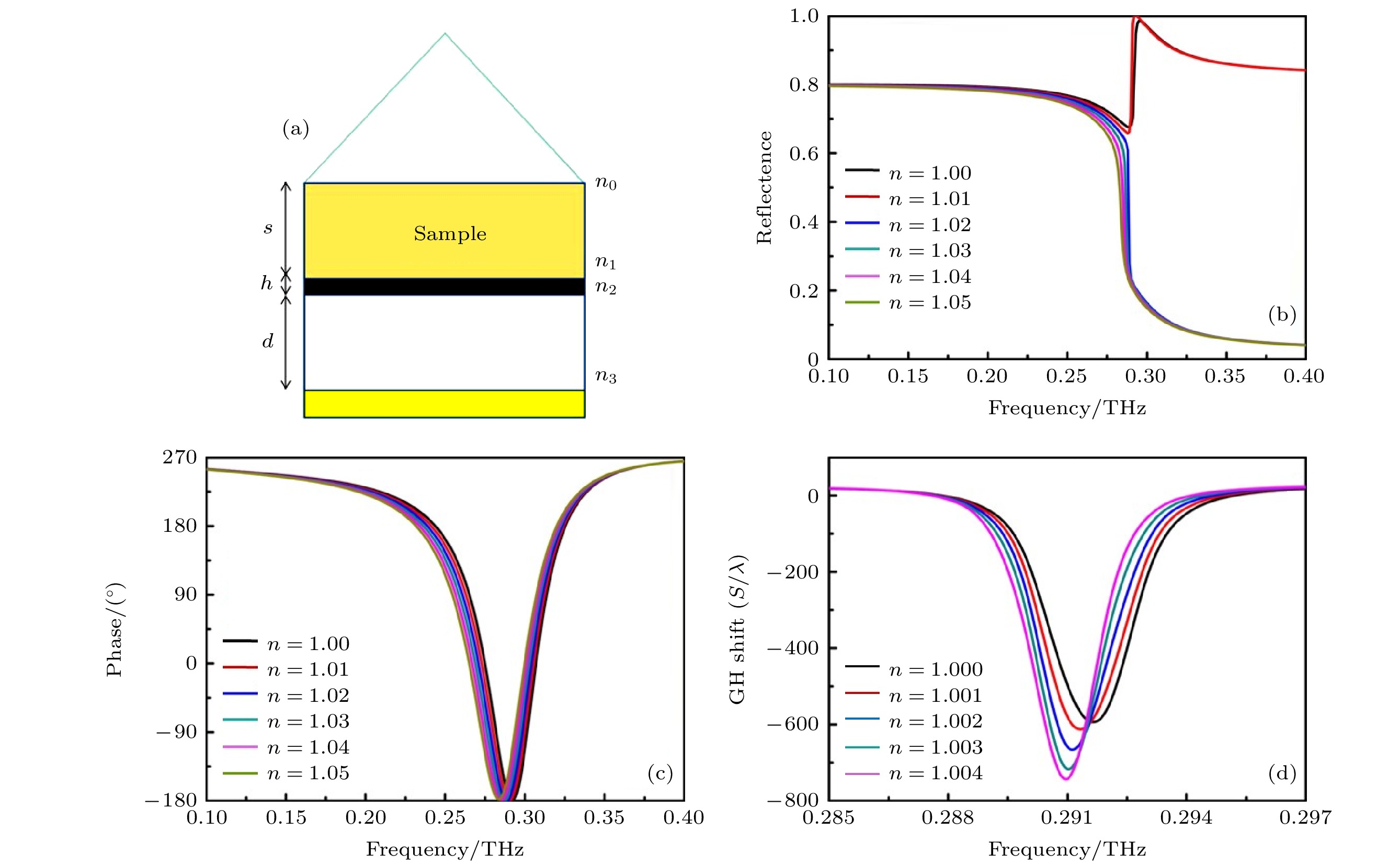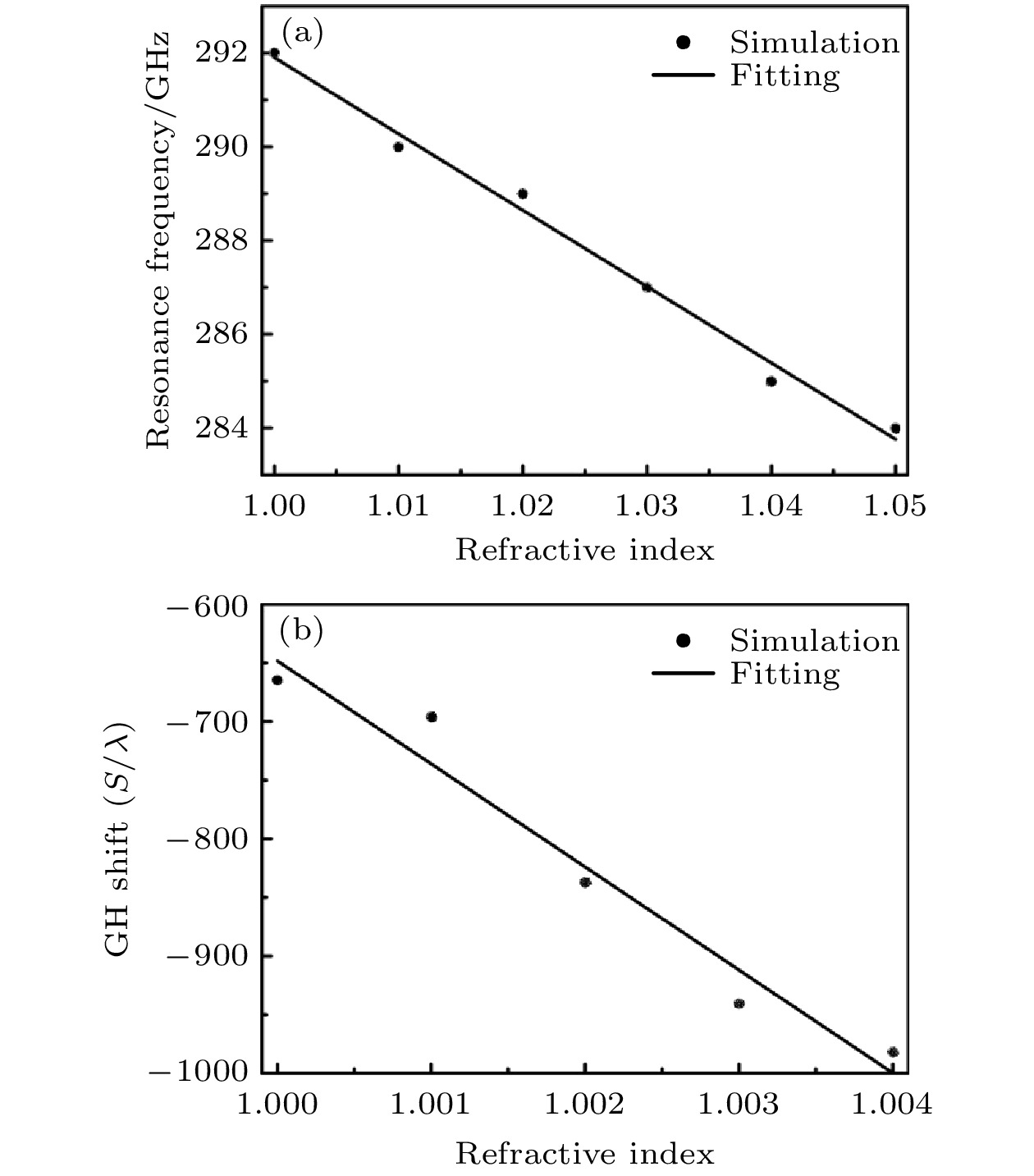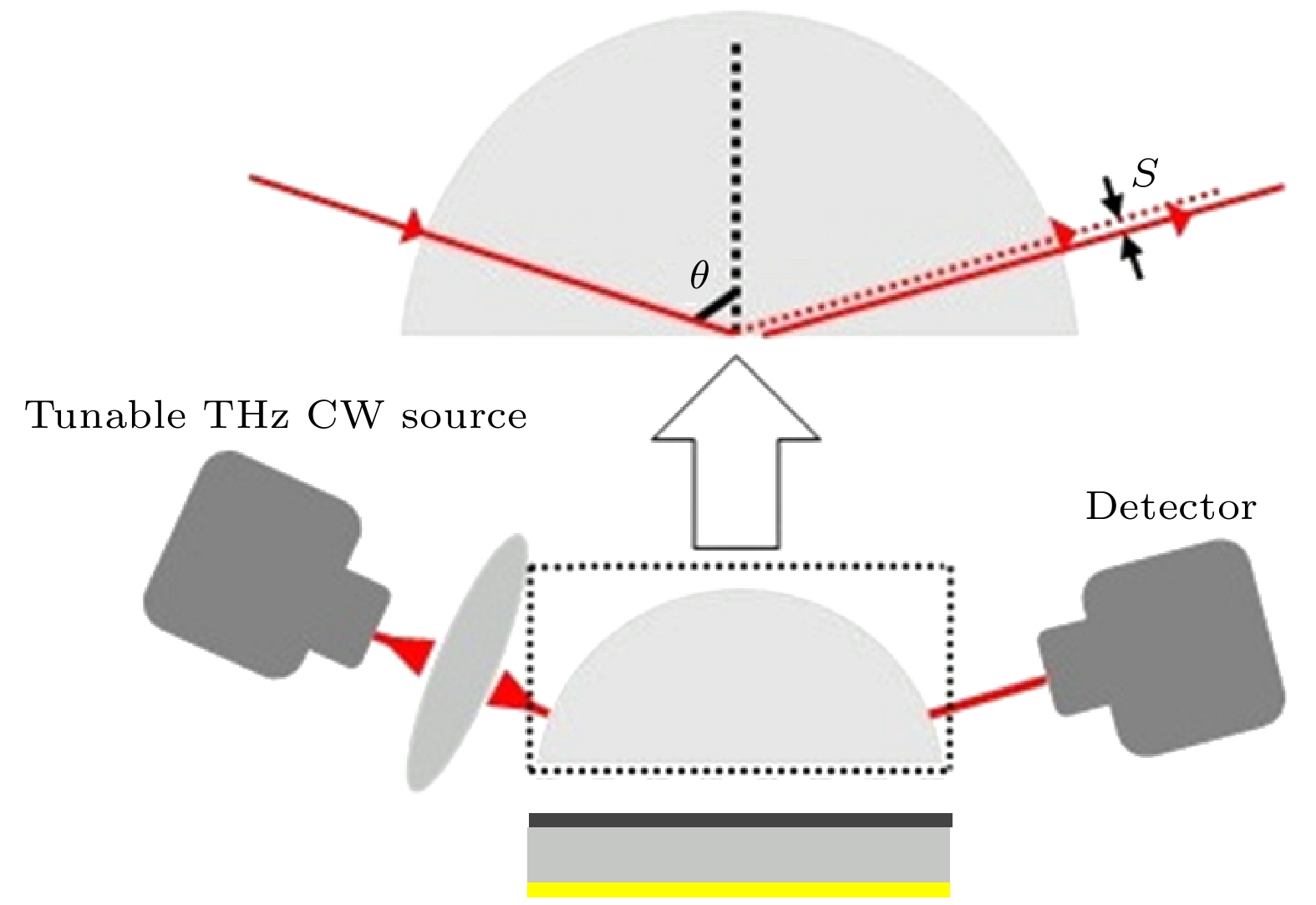-
The active modulation of the amplitude and phase of terahertz wave has been widely adopted in terahertz functional devices. The current metal-insulator-metal metasurface structure combined with two-dimensional materials such as graphene can realize dynamic control of terahertz amplitude/phase, but it has some disadvantages such as less freedom of control (voltage or light intensity), complex processing technology and high price of metasurface structure. In this article, we propose a prism-coupled matel-insulator-graphene (MIG) phase regulation structure. This structure can not only control the phase by adjusting the Fermi level in the usual way, but also change the intrinsic loss and radiation loss of the structure by adjusting the thickness of the air gap and the number of layers of pre-spread graphene, so that the phase of the structure can be controlled, which is determined by the difference between intrinsic loss and radiation loss of the fabric, which is closely related to this structure staying in the under-coupling/over-coupling state. The adjustment of the structural phase can also lead the magnitude of the terahertz Goos–Hänchen(GH) displacement and its positive sign and negative sign to be selected. Furthermore, it is shown that the under-coupling state and the over-coupling state of the structure have an important effect on the coincidence of the Goos–Hanchen (GH) displacement. The results show that by dynamically adjusting the thickness of the air gap and the Fermi level of graphene, and changing the eigenloss and radiation loss of the system, the phase regulation can be achieved. Finally, the transition from overdamped to underdamped state is realized. In this physical process, the GH displacement of the system will also change obviously. This paper puts forward the structure of the process with simple processing technology (no need to microstructure), tunable high degrees of freedom (available graphene Fermi level and air gap dynamic regulation, also could be regulated and controlled by controlling the graphene layers) in comparison with the phase modulator of metal-insulator-metal super surface structure. The results of this paper open up a new way of developing the multi-parameter tunable terahertz sensor components.
-
Keywords:
- terahertz /
- graphene /
- phase transition /
- Goos–Hänchen shift
[1] Hao J M, Ren Q J, An Z H, Huang X Q, Chen Z H, Qiu M, Zhou L 2009 Phys. Rev. A 80 023807
 Google Scholar
Google Scholar
[2] Hao J M, Yuan Y, Ran L X, Jiang T, Kong J A, Chan C T, Zhou L 2007 Phys. Rev. Lett. 99 063908
 Google Scholar
Google Scholar
[3] Chen L, Liao D G, Guo X G, Zhao J Y, Zhu Y M, Zhuang S L 2019 Front. Inform. Technol. Electron. Eng. 20 591
 Google Scholar
Google Scholar
[4] Sievenpiper D, Zhang L J, Broas R F J, et al. 1999 IEEE Trans. Microwave Theory Tech. 47 2059
 Google Scholar
Google Scholar
[5] Zhou L, Wen W J, Chan C T, Sheng P 2003 Appl. Phys. Lett. 83 3257
 Google Scholar
Google Scholar
[6] Anders P, Sergey I B 2013 Opt. Express 21 27438
 Google Scholar
Google Scholar
[7] Dai Ch L, Sun G Q, Hu L Y, Xiao Y K, Zhang Z P, Qu L T 2020 InfoMat. 2 12039
[8] Ding L, Qiu T Y, Zhang J, Wen X 2019 J. Opt. 21 125602
 Google Scholar
Google Scholar
[9] Hu T, Bingham C M, Strikwerda A C, et al. 2008 Phys. Rev. B 78 241103
 Google Scholar
Google Scholar
[10] Hao J M, Wang J, Liu X L, Willie J P, Zhou L, Qiu M 2010 Appl. Phys. Lett. 96 251104
 Google Scholar
Google Scholar
[11] Liu N, Martin M, Thomas W, Mario H, Harald G 2010 Nano Lett. 10 2342
 Google Scholar
Google Scholar
[12] Claire M W, Liu X L, Willie J P 2012 Adv. Mater. 24 OP98
[13] Sun S L, Yang K Y, Wang C M, et al. 2012 Nano Lett. 12 6223
 Google Scholar
Google Scholar
[14] Anders P, Ole A, Ilya P R, Sergey I B 2013 Sci. Rep. 3 2155
 Google Scholar
Google Scholar
[15] Li X, Xiao S Y, Cai B G, He Q, Cui T J, Zhou L 2012 Opt. Lett. 37 4940
 Google Scholar
Google Scholar
[16] Anders P, Michael G. N, René L E, Sergey I B 2013 Nano Lett. 13 829
 Google Scholar
Google Scholar
[17] Chen L, Wei M Y, Zang X F, Zhu Y M, Zhuang S L 2016 Sci. Rep. 6 22027
 Google Scholar
Google Scholar
[18] Chen L, Xu N N, Leena S, Cui T J, Ranjan S, Zhu Y M, Zhang W L 2017 Adv. Opt. Mater. 5 1600960
 Google Scholar
Google Scholar
[19] Xu J J, Liao D G, Gupta M, Zhu Y M, Zhuang S L, Singh R, Chen L 2021 Adv. Opt. Mater. 9 2100024
[20] Miao Z Q, Wu Q, Li X, He Q, Ding K, An Z H, Zhang Y B, Zhou L 2015 Phys. Rev. X 5 041027
[21] Qu C, Ma S J, Hao J M, Qiu M, et al. 2015 Phys. Rev. Lett. 115 235503
 Google Scholar
Google Scholar
[22] Qing Y M, Ma H F, Cui T J 2018 Opt. Express 26 32442
 Google Scholar
Google Scholar
[23] Cong L Q, Pitchappa P, Lee C K, Singh R 2017 Adv. Mater. 29 1700733
 Google Scholar
Google Scholar
[24] Chen L, Ge Y F, Zang X F, et al. 2019 IEEE Trans. Terahertz Sci. Technol. 9 643
 Google Scholar
Google Scholar
[25] Yin S, Shi X T, Huang W, Zhang W T, Hu F R, Qin Z J, Xiong X M 2019 Electronics 8 1528
 Google Scholar
Google Scholar
[26] Li J S, Wu J F, Zhang L 2014 IEEE Photonics J. 6 2374591
[27] Alaee R, Farhat M, Rockstuhl C, Lederer F 2012 Opt. Express 20 28017
 Google Scholar
Google Scholar
[28] Chen L, Cao Z Q, Shen Q S, Deng X X 2007 J. Lightwave Technol. 25 539
 Google Scholar
Google Scholar
[29] Artmann K 1948 Ann. Phys. 437 87
 Google Scholar
Google Scholar
[30] Chen L, Cao Z Q, Ou F, Li H G, Shen Q S, Qiao H C 2007 Opt. Lett. 32 1432
 Google Scholar
Google Scholar
[31] Chen L, Zhu Y M, Zang X F, Cai B, Li Z, Xie L, Zhuang S L 2013 Light Sci. Appl. 2 e60
 Google Scholar
Google Scholar
-
-
[1] Hao J M, Ren Q J, An Z H, Huang X Q, Chen Z H, Qiu M, Zhou L 2009 Phys. Rev. A 80 023807
 Google Scholar
Google Scholar
[2] Hao J M, Yuan Y, Ran L X, Jiang T, Kong J A, Chan C T, Zhou L 2007 Phys. Rev. Lett. 99 063908
 Google Scholar
Google Scholar
[3] Chen L, Liao D G, Guo X G, Zhao J Y, Zhu Y M, Zhuang S L 2019 Front. Inform. Technol. Electron. Eng. 20 591
 Google Scholar
Google Scholar
[4] Sievenpiper D, Zhang L J, Broas R F J, et al. 1999 IEEE Trans. Microwave Theory Tech. 47 2059
 Google Scholar
Google Scholar
[5] Zhou L, Wen W J, Chan C T, Sheng P 2003 Appl. Phys. Lett. 83 3257
 Google Scholar
Google Scholar
[6] Anders P, Sergey I B 2013 Opt. Express 21 27438
 Google Scholar
Google Scholar
[7] Dai Ch L, Sun G Q, Hu L Y, Xiao Y K, Zhang Z P, Qu L T 2020 InfoMat. 2 12039
[8] Ding L, Qiu T Y, Zhang J, Wen X 2019 J. Opt. 21 125602
 Google Scholar
Google Scholar
[9] Hu T, Bingham C M, Strikwerda A C, et al. 2008 Phys. Rev. B 78 241103
 Google Scholar
Google Scholar
[10] Hao J M, Wang J, Liu X L, Willie J P, Zhou L, Qiu M 2010 Appl. Phys. Lett. 96 251104
 Google Scholar
Google Scholar
[11] Liu N, Martin M, Thomas W, Mario H, Harald G 2010 Nano Lett. 10 2342
 Google Scholar
Google Scholar
[12] Claire M W, Liu X L, Willie J P 2012 Adv. Mater. 24 OP98
[13] Sun S L, Yang K Y, Wang C M, et al. 2012 Nano Lett. 12 6223
 Google Scholar
Google Scholar
[14] Anders P, Ole A, Ilya P R, Sergey I B 2013 Sci. Rep. 3 2155
 Google Scholar
Google Scholar
[15] Li X, Xiao S Y, Cai B G, He Q, Cui T J, Zhou L 2012 Opt. Lett. 37 4940
 Google Scholar
Google Scholar
[16] Anders P, Michael G. N, René L E, Sergey I B 2013 Nano Lett. 13 829
 Google Scholar
Google Scholar
[17] Chen L, Wei M Y, Zang X F, Zhu Y M, Zhuang S L 2016 Sci. Rep. 6 22027
 Google Scholar
Google Scholar
[18] Chen L, Xu N N, Leena S, Cui T J, Ranjan S, Zhu Y M, Zhang W L 2017 Adv. Opt. Mater. 5 1600960
 Google Scholar
Google Scholar
[19] Xu J J, Liao D G, Gupta M, Zhu Y M, Zhuang S L, Singh R, Chen L 2021 Adv. Opt. Mater. 9 2100024
[20] Miao Z Q, Wu Q, Li X, He Q, Ding K, An Z H, Zhang Y B, Zhou L 2015 Phys. Rev. X 5 041027
[21] Qu C, Ma S J, Hao J M, Qiu M, et al. 2015 Phys. Rev. Lett. 115 235503
 Google Scholar
Google Scholar
[22] Qing Y M, Ma H F, Cui T J 2018 Opt. Express 26 32442
 Google Scholar
Google Scholar
[23] Cong L Q, Pitchappa P, Lee C K, Singh R 2017 Adv. Mater. 29 1700733
 Google Scholar
Google Scholar
[24] Chen L, Ge Y F, Zang X F, et al. 2019 IEEE Trans. Terahertz Sci. Technol. 9 643
 Google Scholar
Google Scholar
[25] Yin S, Shi X T, Huang W, Zhang W T, Hu F R, Qin Z J, Xiong X M 2019 Electronics 8 1528
 Google Scholar
Google Scholar
[26] Li J S, Wu J F, Zhang L 2014 IEEE Photonics J. 6 2374591
[27] Alaee R, Farhat M, Rockstuhl C, Lederer F 2012 Opt. Express 20 28017
 Google Scholar
Google Scholar
[28] Chen L, Cao Z Q, Shen Q S, Deng X X 2007 J. Lightwave Technol. 25 539
 Google Scholar
Google Scholar
[29] Artmann K 1948 Ann. Phys. 437 87
 Google Scholar
Google Scholar
[30] Chen L, Cao Z Q, Ou F, Li H G, Shen Q S, Qiao H C 2007 Opt. Lett. 32 1432
 Google Scholar
Google Scholar
[31] Chen L, Zhu Y M, Zang X F, Cai B, Li Z, Xie L, Zhuang S L 2013 Light Sci. Appl. 2 e60
 Google Scholar
Google Scholar
Catalog
Metrics
- Abstract views: 4575
- PDF Downloads: 122
- Cited By: 0














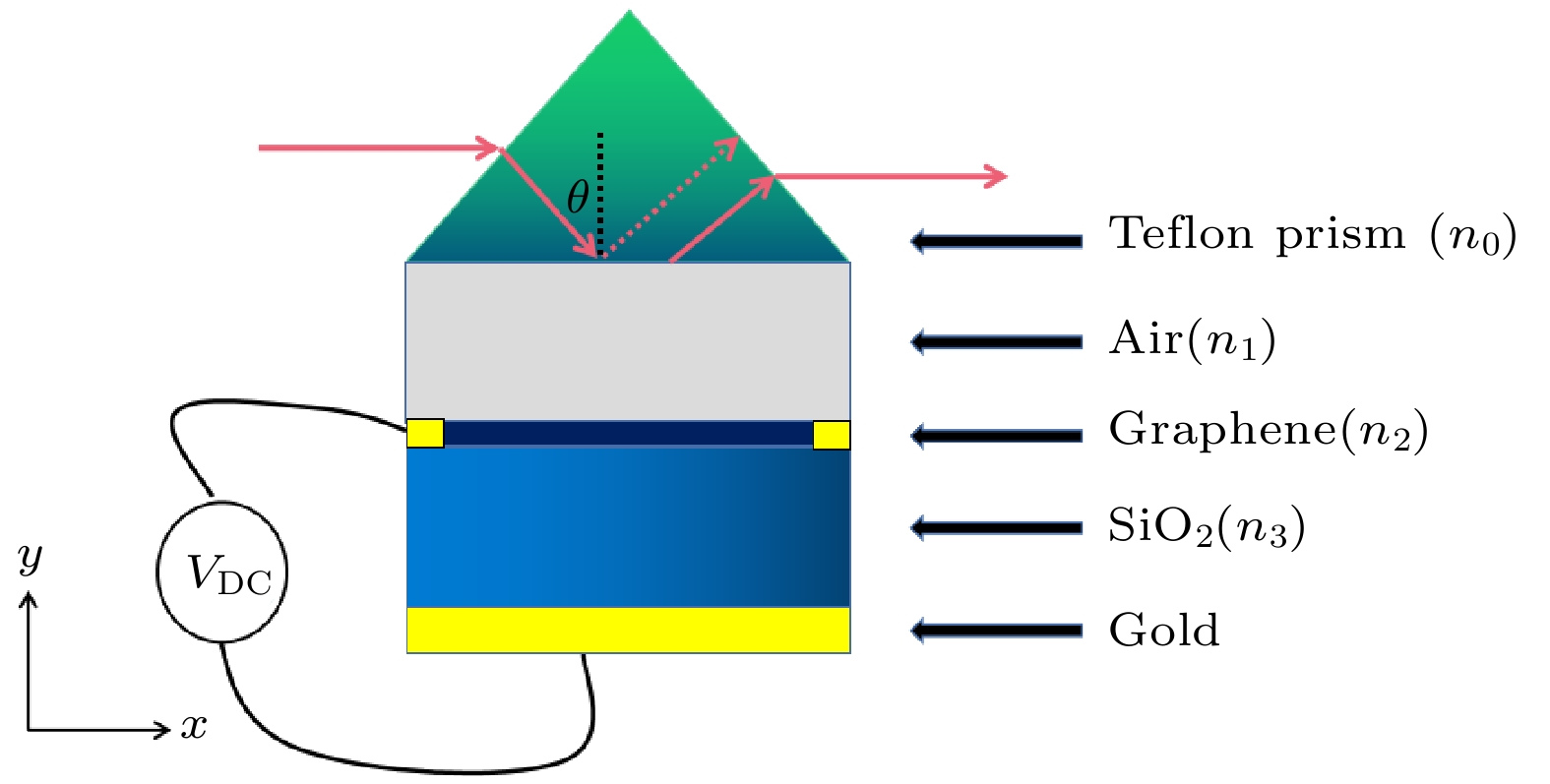
 DownLoad:
DownLoad:

